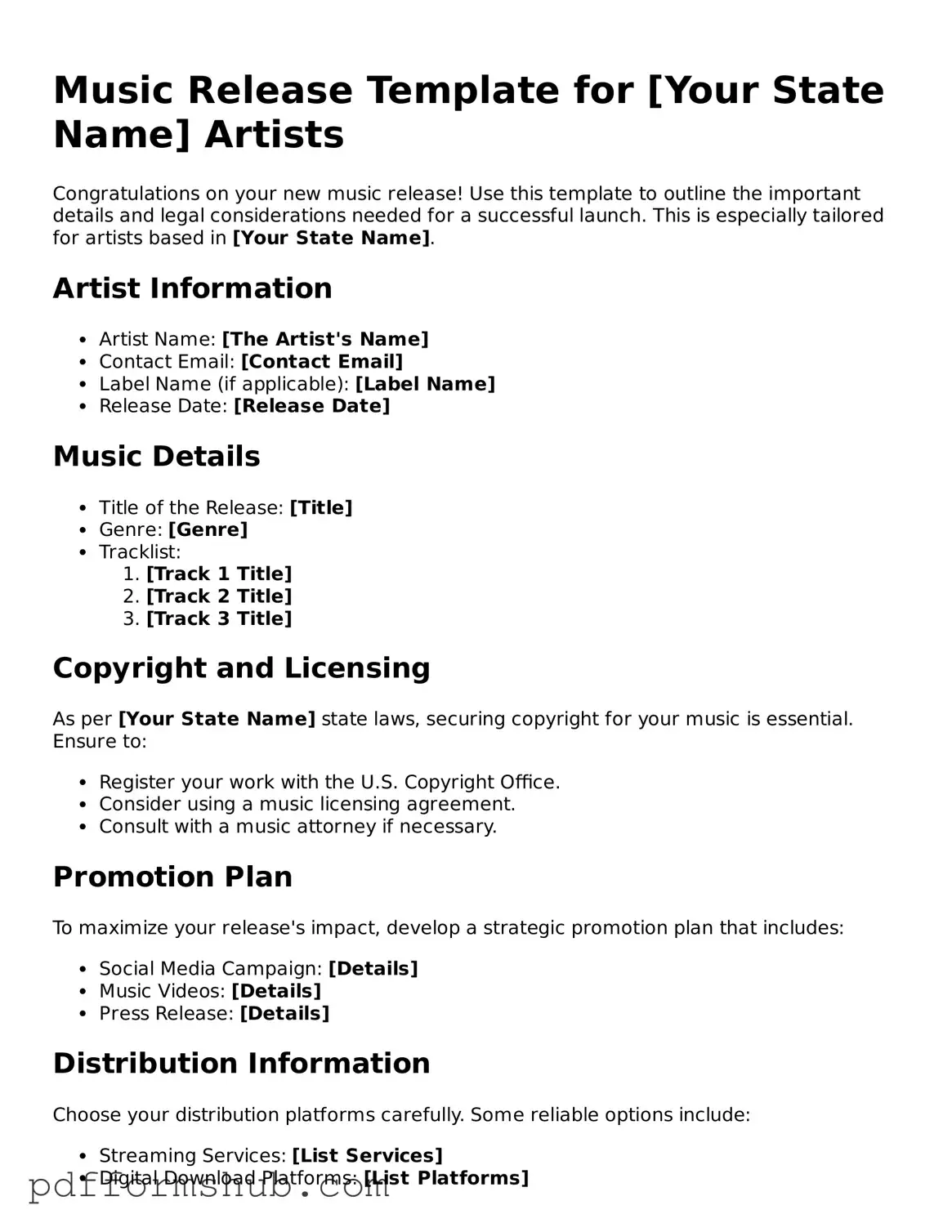Valid Music Release Form
The Music Release form is a legal document that allows artists to grant permission for their music to be used by others, ensuring that both parties understand their rights and obligations. This form is essential for protecting the interests of musicians and producers alike, as it clarifies how the music can be used and distributed. To ensure proper usage and avoid potential disputes, it is crucial to fill out the form accurately.
Click the button below to fill out the Music Release form.
Customize Form
